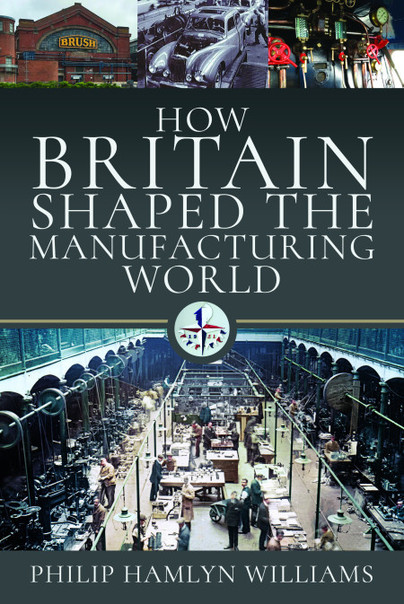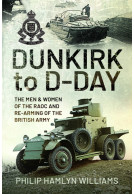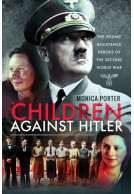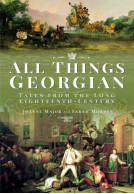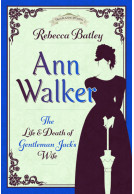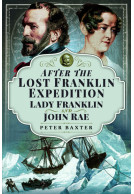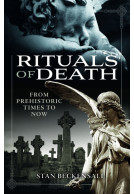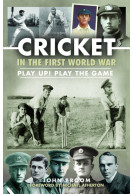How Britain Shaped the Manufacturing World (Hardback)
1851 - 1951
Imprint: Pen & Sword History
Pages: 256
Illustrations: 20 black and white illustrations
ISBN: 9781399015158
Published: 15th June 2022
(click here for international delivery rates)
Need a currency converter? Check XE.com for live rates
| Other formats available - Buy the Hardback and get the eBook for £1.99! | Price |
|---|---|
| How Britain Shaped the Manufacturing… eBook (15.8 MB) Add to Basket | £6.99 |
The peoples of the British Isles gave to the world the foundations on which modern manufacturing economies are built. This is quite an assertion, but history shows that, in the late eighteenth century, a remarkable combination of factors and circumstances combined to give birth to Britain as the first manufacturing nation. Further factors allowed it to remain top manufacturing dog well into the twentieth century whilst other countries were busy playing catch up. Through two world wars and the surrounding years, British manufacturing remained strong, albeit whilst ceding the lead to the United States.
This book seeks to tell the remarkable story of British manufacturing, using the Great Exhibition of 1851 as a prism. Prince Albert and Sir Henry Cole had conceived an idea of bringing together exhibits from manufacturers across the world to show to its many millions of visitors the pre-eminence of the British. 1851 was not the start, but rather a pause for a bask in glory.
This book traces back from the exhibits in Hyde Park’s Crystal Palace to identify the factors that gave rise to this pre-eminence, then follows developments up until the Festival of Britain exactly one century later. Steam power and communication by electric telegraph, both British inventions, predated the Exhibition. After it came the sewing machine and bicycle, motor car and aeroplane, but also electrical power, radio and the chemical and pharmaceutical industries where Britain played a leading part.
...if you are interested in facts about some of the lesser-known names in British manufacturing, this might be the book for you.
Jenni Hyde, The Historian Magazine
Wide-ranging and full of interesting insights. A clever idea to bookend the story of British manufacturing between the 1951 Great Exhibition and 1951 Festival of Britain. Based on extensive research and linking a whole plethora of British industries, this makes fascinating connections between the various drivers of the British manufacturing industry in the period.
Andrew Lownie
As seen in the Lincoln Independent.
Rob White, Lincoln Independent
I wanted to read How Britain Shaped the Manufacturing World by Philip Hamlyn Williams because I studied economic history last year and I liked the subject a lot. On top of that the author’s great grandfather exhibited at the Great Exhibition of 1851. That made the book too enticing to miss and I’m glad I didn’t because it’s great.
Coffee and Books
The book covers the period from 1850 to 1950, the last chapter being on the Festival of Britain of 1951. It’s a wonderfully circular structure, to start with the Great Exhibition and finish with the Festival of Britain. With wars, including both world wars, and disruption to supply chains, advances in technology, changes in manufacturing, this book had to cover a lot of information and it does it beautifully. It’s easy to read, explained clearly and engaging.
Many topics are covered, from steam power which was still in its infancy in the 1850s to the Mallard of the 1930s, covered developments in communication, the sewing machine, bicycles, cars and aeroplanes. He covers the chemical and pharmaceutical industries, which were interesting to read about. Germany had a leading role when it came to dyestuff, but the war changed that, of course.
This is a very good book, one I would recommend to anyone, without any doubt.
5/5 stars
Read the full review here
Featured in PwC former partners magazine
PwC former partners magazine
This book begins from the Great Exhibition at Crystal Palace and continues for the next 100 years and covers the inter-war years too.
The History Fella
Read the full review here
The subject is fascinating; covering the period between the Great Exhibition and the Festival of Britain would seem to be an impossible task, but [the author has] done it very well indeed. There are some great photographs.
Richard Pullen - author of 'The Landships of Lincoln'
This is a brilliant book. I am reading it and find it both very enlightening and absolutely full of information. Recommend it!
Neil Main - Managing Director Micrometric Limited
When Phil asked me to write the forward to his book, I was not prepared for the scale, scope, detail and insights I would gain through this magnificent body of work.
Paul Barron CBE DSc
Phil covers the changing industrial and manufacturing landscape between the two great exhibitions of 1851 and 1951, the latter being the year I was born.
Household names, emerge, merge and disappear as the reader is taken on a wonderful journey from our seafaring and exploring past, through a depression and two world wars to the wonderful exhibition of 1951 which displayed the strength and depth of our industrial capability.
Rating: 5 out of 5 stars
NetGalley, Karen Bull
Fascinating book.
Well written and brings life the amazing work many people did within manufacturing.
I never knew Britain had such a wide history.
As featured by The Manufacturer
Joe Bush, The Manufacturer
About Philip Hamlyn Williams
Phil Hamlyn Williams’s great grandfather exhibited at the Great Exhibition; his grandfather was an inventor and his father spearheaded the mechanisation of the British Army in WW2 and then was a leader in the motor industry. Phil has most recently written Dunkirk to D-Day about The Men of the RAOC and Re-arming the British Army. This followed War on Wheels and Ordnance in which he explored the role of British Manufacturing in the two world wars. Building on these, and his studies of the Industrial Revolution and the Interwar period as part of his BA as a mature student in 2008, he now brings this and extensive further research to tell this story.
Great Exhibition opens in the Crystal Palace, at Hyde Park, London
1st May 1851
Great Exhibition opens in the Crystal Palace, at Hyde Park, London







